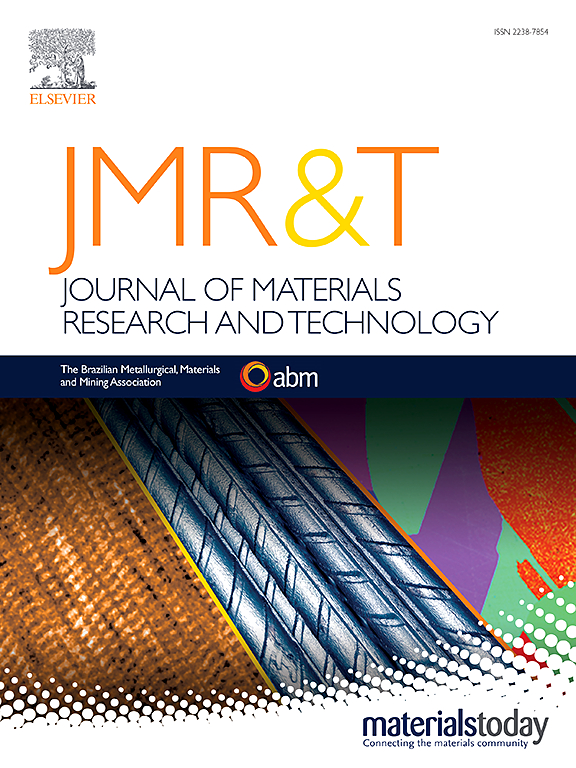Multi-physics analysis of the effect of the process parameters on the inter-layer geometry and surface topography of Laser Powder Bed Fusion-manufactured parts
IF 6.2
2区 材料科学
Q1 MATERIALS SCIENCE, MULTIDISCIPLINARY
Journal of Materials Research and Technology-Jmr&t
Pub Date : 2025-03-10
DOI:10.1016/j.jmrt.2025.03.085
引用次数: 0
Abstract
Surface topography plays an important role in the quality of forming parts by the laser powder bed fusion (LPBF) process. This paper aims to analyze the effect of laser power in single-layer and multi-layer processing using 316L stainless steel. In particular, the novelty of this paper lies in considering the role of the recoater in inter-layer geometry and in analyzing the dynamics of the molten pool (MP) mechanism, which in turn affects the final surface topography. To this end, a multi-physics model incorporating powder bed formation, laser-MP interaction, and MP dynamics is developed. The results show that, for a constant scanning speed, peak and valleys become more pronounced when the laser power increases. Moreover, it is shown that, in the case of multi-layer process, at low laser power, the quality of surface topography does not change from one layer to the next. However, when the laser power is increased, the best surface topography is achieved by changing the laser power between layers. Our analysis provides theoretical and numerical guidance for the optimization of LPBF-3D-printed parts.
表面形貌对激光粉末熔床(LPBF)工艺成形零件的质量起着重要作用。本文旨在分析激光功率对 316L 不锈钢单层和多层加工的影响。特别是,本文的新颖之处在于考虑了重涂机在层间几何形状中的作用,并分析了熔池(MP)的动态机制,这反过来又影响了最终的表面形貌。为此,我们开发了一个多物理场模型,其中包含粉末床形成、激光与熔池的相互作用以及熔池动力学。结果表明,在扫描速度不变的情况下,当激光功率增加时,峰值和谷值变得更加明显。此外,研究还表明,在多层工艺中,激光功率较低时,各层表面形貌的质量不会发生变化。然而,当激光功率增加时,通过改变层与层之间的激光功率,可以获得最佳的表面形貌。我们的分析为 LPBF-3D 打印部件的优化提供了理论和数值指导。
本文章由计算机程序翻译,如有差异,请以英文原文为准。
求助全文
约1分钟内获得全文
求助全文
来源期刊

Journal of Materials Research and Technology-Jmr&t
Materials Science-Metals and Alloys
CiteScore
8.80
自引率
9.40%
发文量
1877
审稿时长
35 days
期刊介绍:
The Journal of Materials Research and Technology is a publication of ABM - Brazilian Metallurgical, Materials and Mining Association - and publishes four issues per year also with a free version online (www.jmrt.com.br). The journal provides an international medium for the publication of theoretical and experimental studies related to Metallurgy, Materials and Minerals research and technology. Appropriate submissions to the Journal of Materials Research and Technology should include scientific and/or engineering factors which affect processes and products in the Metallurgy, Materials and Mining areas.
 求助内容:
求助内容: 应助结果提醒方式:
应助结果提醒方式:


